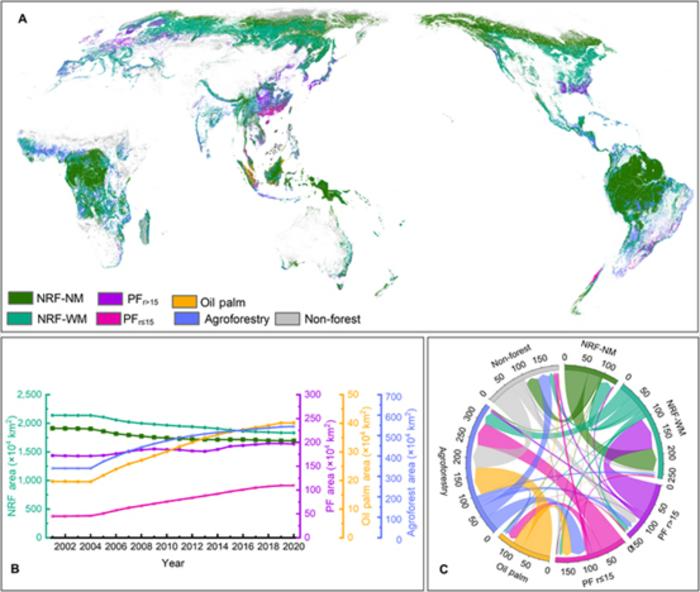According to a new study, there were notable changes in the carbon stocks and composition of global forests between 2001 and 2020. Utilizing cutting-edge machine learning and change detection methodologies, researchers have delivered the most comprehensive and pioneering analysis to date on the global evolution of forest management practices.

Spatial distribution, variations, and transitions of different forest management types from 2001 to 2020. Image Credit: JOURNAL OF REMOTE SENSING
Forests play a critical role in combating climate change by absorbing carbon dioxide. Research supports forest management, like reforestation, for carbon sequestration.
However, the effects of managed forests on soil diversity and carbon storage remain uncertain. Understanding forest patterns globally is crucial yet intricate due to spectral similarities in imagery, underscoring the necessity for meticulous forest management mapping.
A recent study published in the Journal of Remote Sensing on February 12, 2024, employs advanced machine learning and change detection methodologies to provide an exceptionally detailed analysis of the global evolution of forest management practices. The study underscores notable shifts in forest types and the associated management strategies.
This study meticulously classified forests into six distinct management types, employing an innovative approach to elucidate the intricate relationship between human intervention and forest ecosystems. Leveraging state-of-the-art satellite imagery and machine learning technology, the researchers were able to systematically track the evolution of global forest management and its impact on carbon stocks from 2001 to 2020.
The study found that while there were declines in natural forest carbon stocks, these were partly balanced out by increases in managed forests like planted forests, oil palm plantations, and agroforestry systems. This suggests that there's a delicate balance between economic growth and taking care of the environment.
The study goes beyond just looking at deforestation rates. It provides insights into how various forest management practices contribute strategically to global carbon sequestration efforts.
Our findings underscore the dynamic nature of global forests and highlight the significant role of forest management practices in addressing climate change. This study marks a pivotal step toward understanding and optimizing the contribution of forests to carbon sequestration and biodiversity conservation.
Hongtao Xu, Study Lead Author, Beijing Normal University
The insights from this study are crucial for policymakers, conservationists, and researchers, as they offer a data-driven foundation for improving forest management strategies. By comprehending the spatial and temporal shifts in forest composition, stakeholders can more effectively coordinate reforestation and conservation initiatives to align with global climate objectives.
The BNU-FGS Global Environmental Change Program (grant 2023-GC-ZYTS-01), the State Key Laboratory of Earth Surface Processes and Resource Ecology (grant 2023-KF-02), and the High-Resolution Earth Observation Major Special Aerial Observation System (grant 30-H30C01-9004-19/21) provided funding for this study.
Journal Reference:
Xu, H., et. al. (2024) Changes in the Fine Composition of Global Forests from 2001 to 2020. Journal of Remote Sensing. doi:10.34133/remotesensing.0119